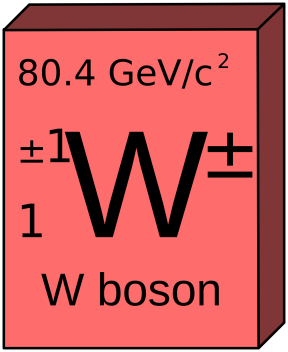Description

Copyright infringement not intended.
Context
- According to a new measurement taken at the Fermilab Tevatron collider in the US, the mass of W bosons appears to be higher than that predicted by the Standard Model. Thus, the new measurement disagrees with the Standard Model of particle physics.
Standard Model of Particle Physics
- There’s a framework of rules that describes how the elementary particles of our universe look and behave that physicists have spent decades putting together, called the Standard Model.
- Thus, the Standard Model of particle physics describes the properties and behaviour of elementary particles.
Boson
- In particle physics, a boson is a type of particle that obeys the rules of Bose-Einstein statistics.
- Bosons are sometimes called force particles, because it is the bosons that control the interaction of physical forces, such as electromagnetism and possibly even gravity itself.
Fundamental Bosons
- According to the Standard Model of quantum physics, there are a number of fundamental bosons, which are not made up of smaller particles. This includes the basic gauge bosons, the particles that mediate the fundamental forces of. These four gauge bosons have spin 1 and have all been experimentally observed:
- Photon - Known as the particle of light, photons carry all electromagnetic energy and act as the gauge boson that mediates the force of electromagnetic interactions.
- Gluon - Gluons mediate the interactions of the strong nuclear force, which binds together quarks to form protons and neutrons and also holds the protons and neutrons together within an atom's nucleus.
- W Boson - One of the two gauge bosons involved in mediating the weak nuclear force.
- Z Boson - One of the two gauge bosons involved in mediating the weak nuclear force.
Importance of W Bosons
- The standard model describes three distinct forces: electromagnetism, the strong force and the weak force. Particles called bosons serve as mediators for these forces between particles of matter. The weak force, which is responsible for radioactive decay, uses the W boson as one of its messengers.
- Together with the neutral Z boson, the charged W boson mediates the weak interaction, which causes beta decay and several other important processes in particle physics.
- The weak interaction is also unique in that, whereas the photons that mediate electromagnetism and the gluons that mediate the strong interaction are massless, the W and Z bosons have mass.
- The W boson is so central to the standard model that physicists have tried to measure its mass with ever greater precision since it was first observed in 1983. These measurements have all broadly agreed with each other, an apparent confirmation of the standard model’s validity.
What was the need for conducting new measurements?
- The standard model is not accurate. It has no explanation for gravity, dark matter and the absence of antimatter in our universe. So physicists are constantly on the lookout for deviant measurements that could lead to new theories.
- The generally accepted mass for the W boson was 80.379 gigaelectronvolts.
- New measurement for the W boson’s mass using data from the Tevatron collider in Illinois, puts it at 80.4335 gigaelectronvolts.
Measuring W boson’s mass
- The team measured the boson’s mass by smashing beams of protons and antiprotons together and analysing the particles produced in the collision. The analysis was so complex that the result took more than a decade to produce, after the Tevatron shut down in 2011, but its potential implications are huge.
Implications
- If the new precision measurement is confirmed, the results suggest that the Standard Model calculation for the W boson needs to be adjusted or an extension needs to be made to the model to explain the results.
- Differences in the results could even mean new particles or changes in the understanding of interactions described by the Standard Model.
https://science.thewire.in/the-sciences/w-boson-mass-anomaly-tevatron-new-physics-standard-model/











